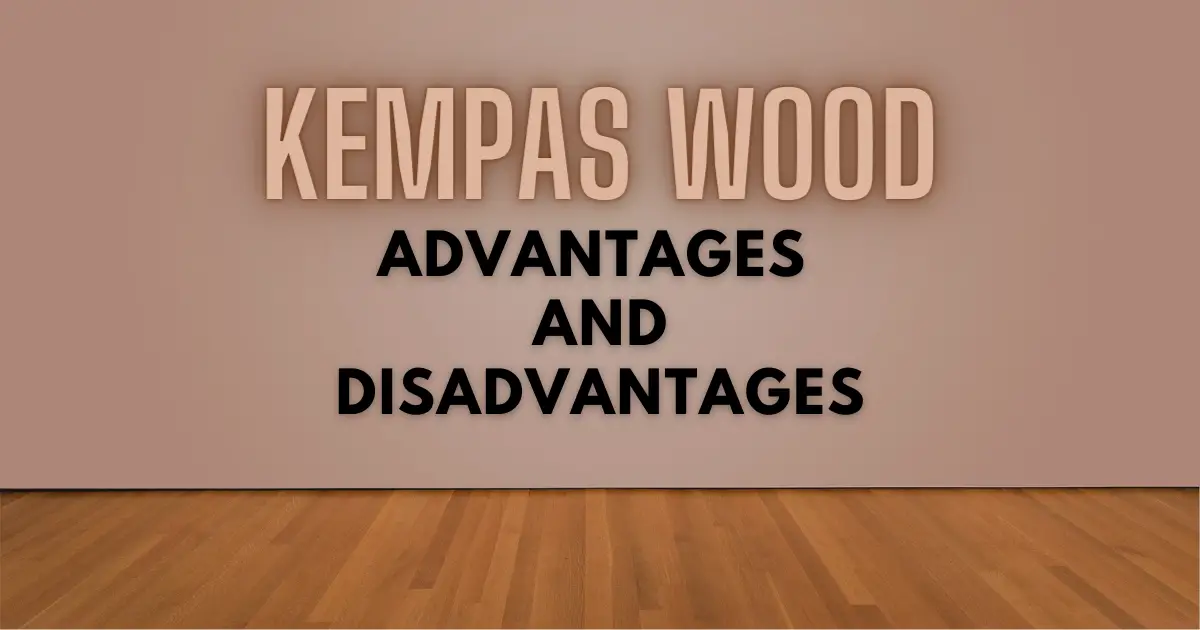Kempas wood is durable, decay resistant and inexpensive hardwood native to Southeast Asia. It is widely used for flooring, heavy construction, railroad crossties, plywood, and pallets.
The color of the Kempas wood can range from orange-red to orangish-brown. It has an interlocking and wavy grain pattern with a medium course.
Kempas wood is a great species with many unique characteristics, but it also has some drawbacks that you should know before use.
Advantages of Kempas wood
- Durability: Kempas is moderately durable and resistant to decay and termite infestation, making it ideal for outdoor use.
- Hardness: It is hard wood, making it less prone to dents and scratches, making it suitable for flooring.
- Appearance: Kempas wood has an orange-brown color. It is an attractive choice for interior design and decorative projects. It looks similar to the expensive and rare mahogany wood.
- Versatility: Kempas is suitable for a wide range of applications, including flooring, furniture, cabinetry, millwork and many more.
- No Odor: Campus wood does not have any smell.
Disadvantages of Kempas wood
- Cost: Kempas wood can be relatively expensive compared to other types of hardwood. Generally, its price ranges from $10 to $15 per square foot.
- Availability: Kempas wood is not widely available in countries other than Asia, making it difficult to find in some areas.
- Workability: Kempas wood is not easy to work with; its high density and tight grain can be challenging to beginners.
- Sustainability: It is not listed in the CITES Appendices but is listed on IUCN as being conservation dependent. Its population has decreased significantly in the last few decades.
- Susceptible to termite attacks: Kempas wood is highly prone to insect attacks. Therefore, it cannot be used for applications in contact with soil.
FAQ
Is Kempas Wood Good for Flooring?
There are many reasons why Kempas wood may be a better choice for flooring. Kempas wood is moderately durable and stable and harder than pine and cedar.
But Kempas wood flooring needs proper finishing to avoid insect attack and rotting. Kempas wood flooring lasts for about 10 to 15 years under maintenance.
How Hard is Kempas Wood?
Kempas wood has a Janka Hardness value of 1,750 lbf (7,800 N) and a dry weight of 55 lbs/ft3 (880 kg/m3).
Conclusion
In summary, Kempas wood offers many benefits, including durability, strength, and attractive color, but it also has some drawbacks, such as cost, availability, and environmental concerns.

